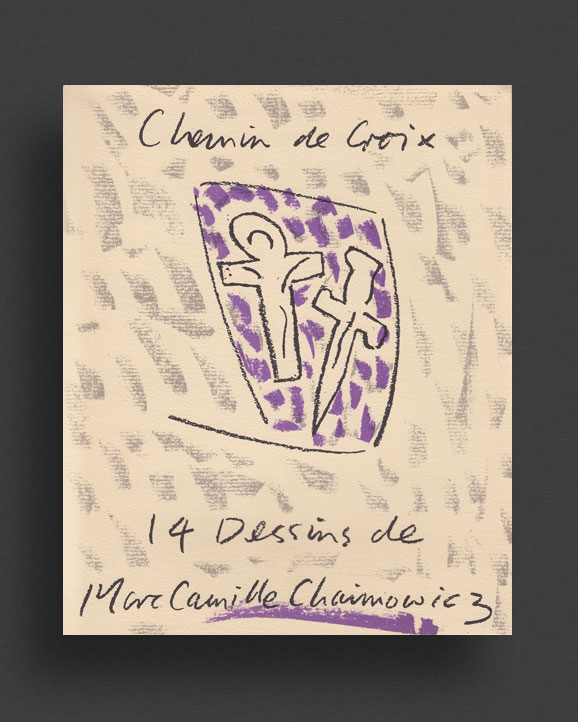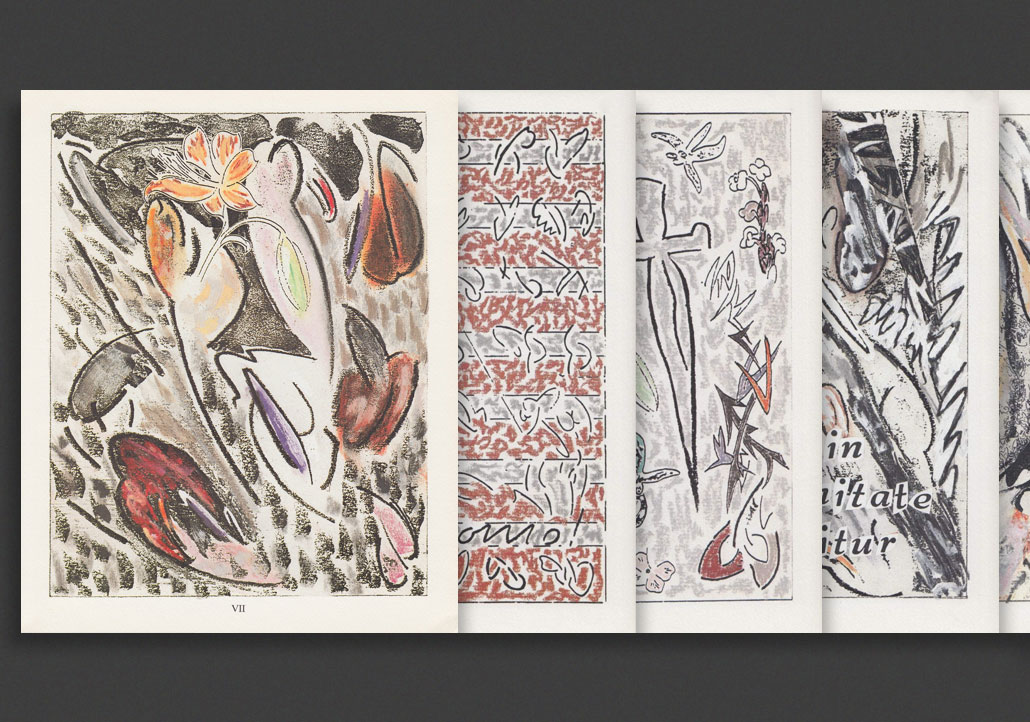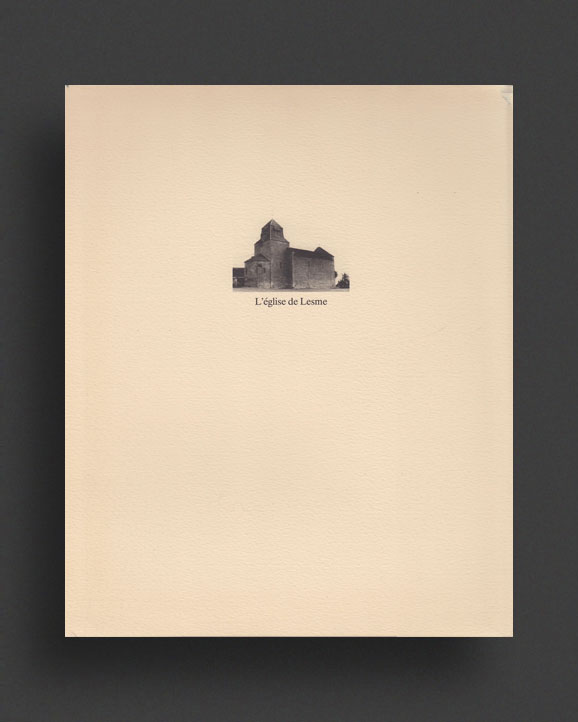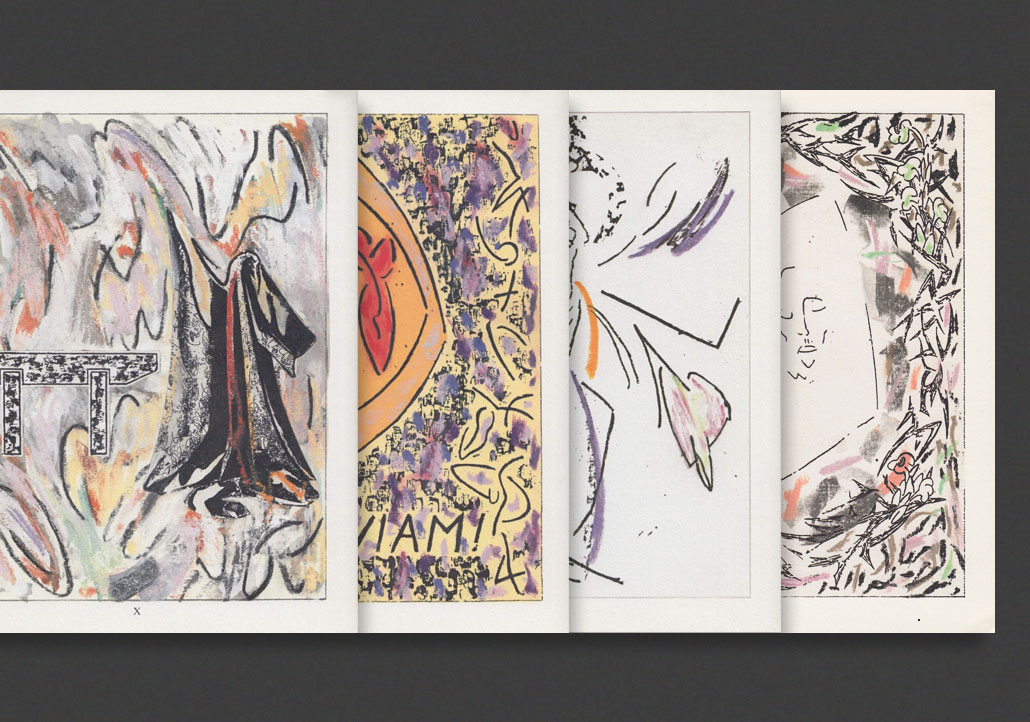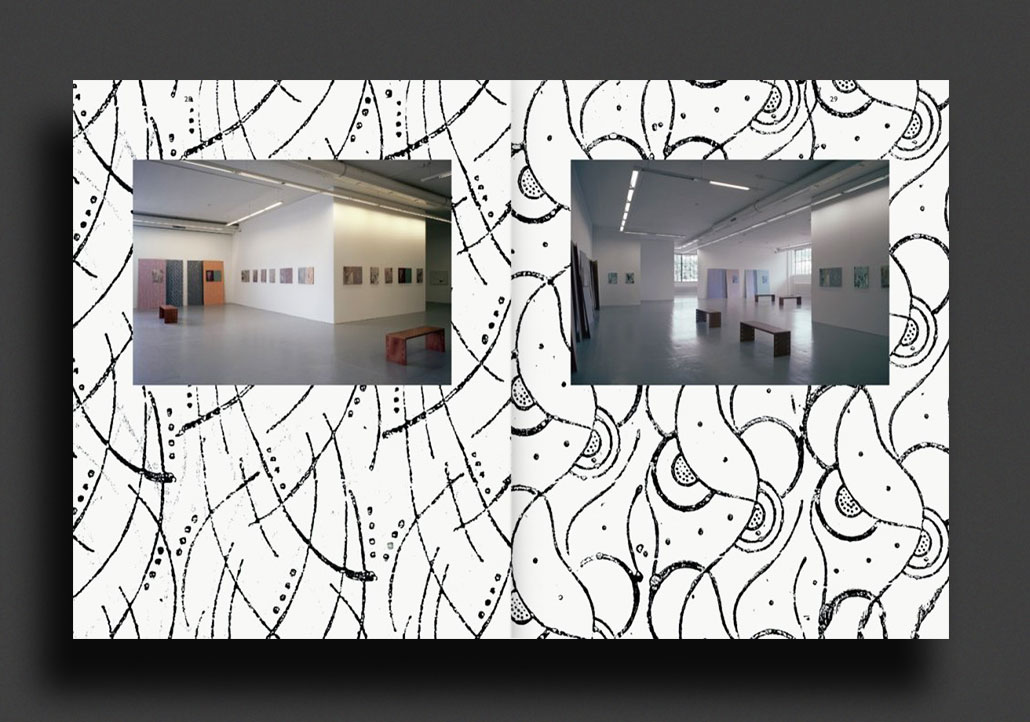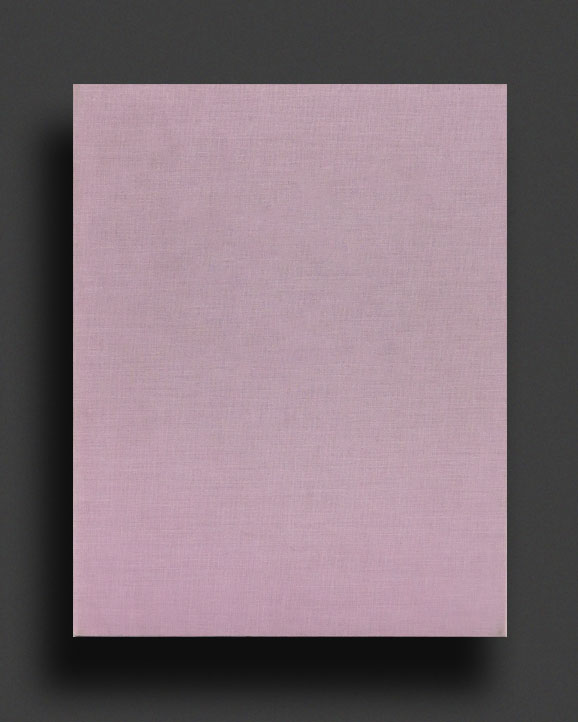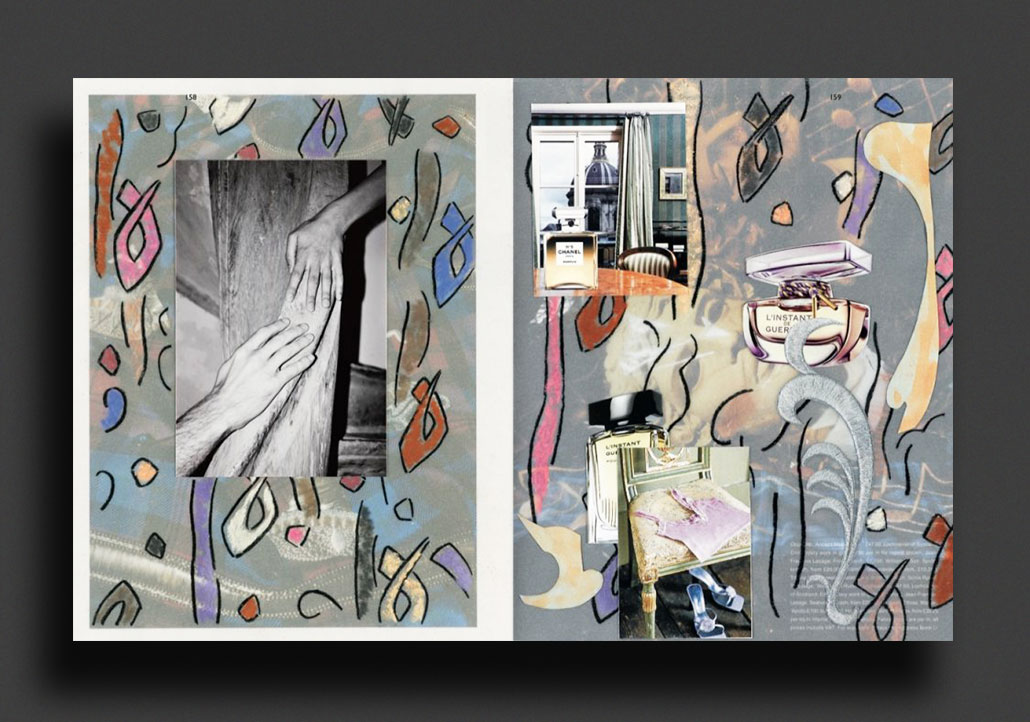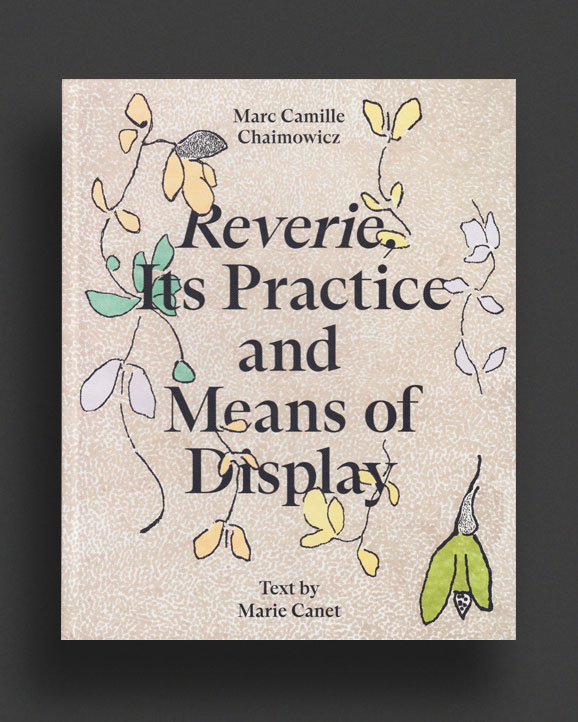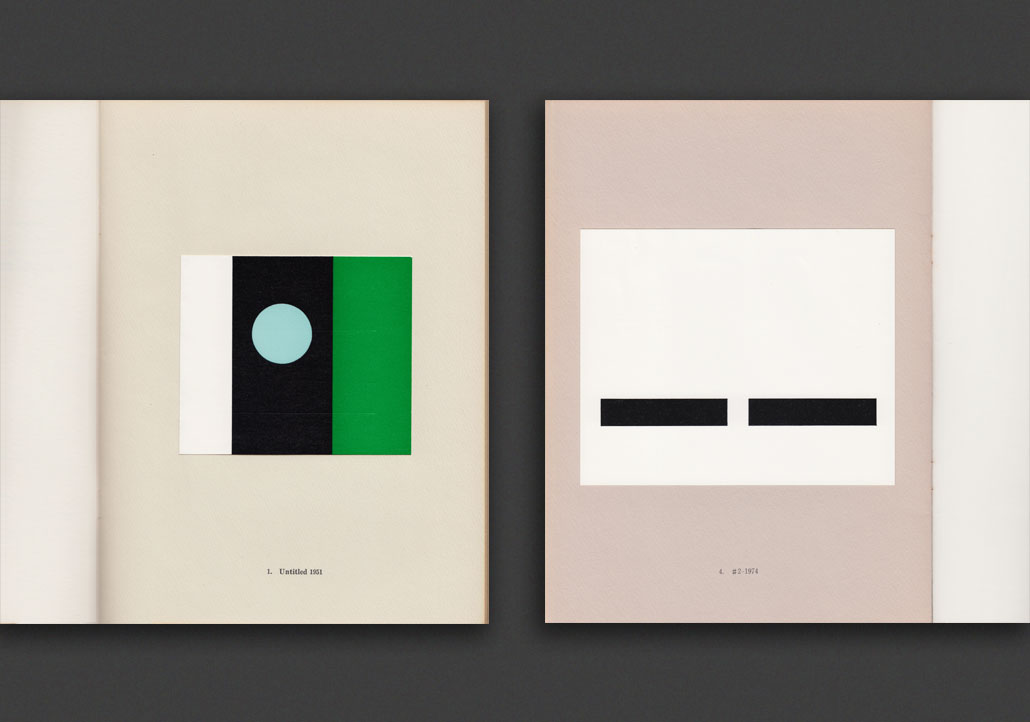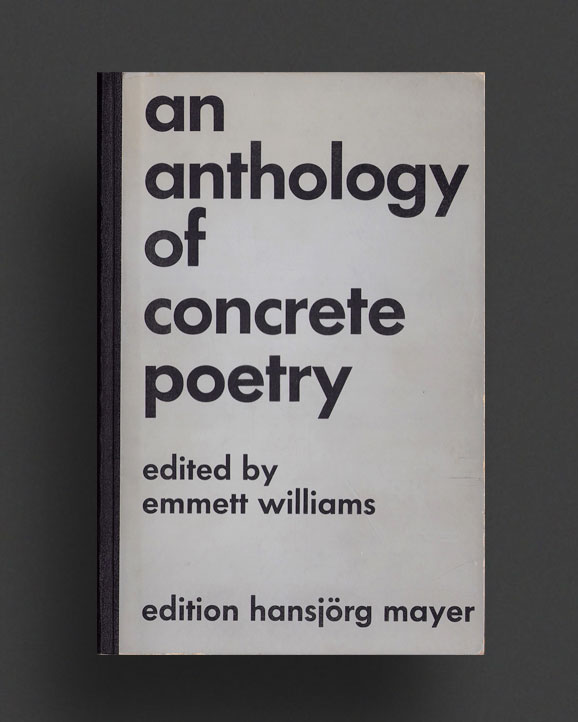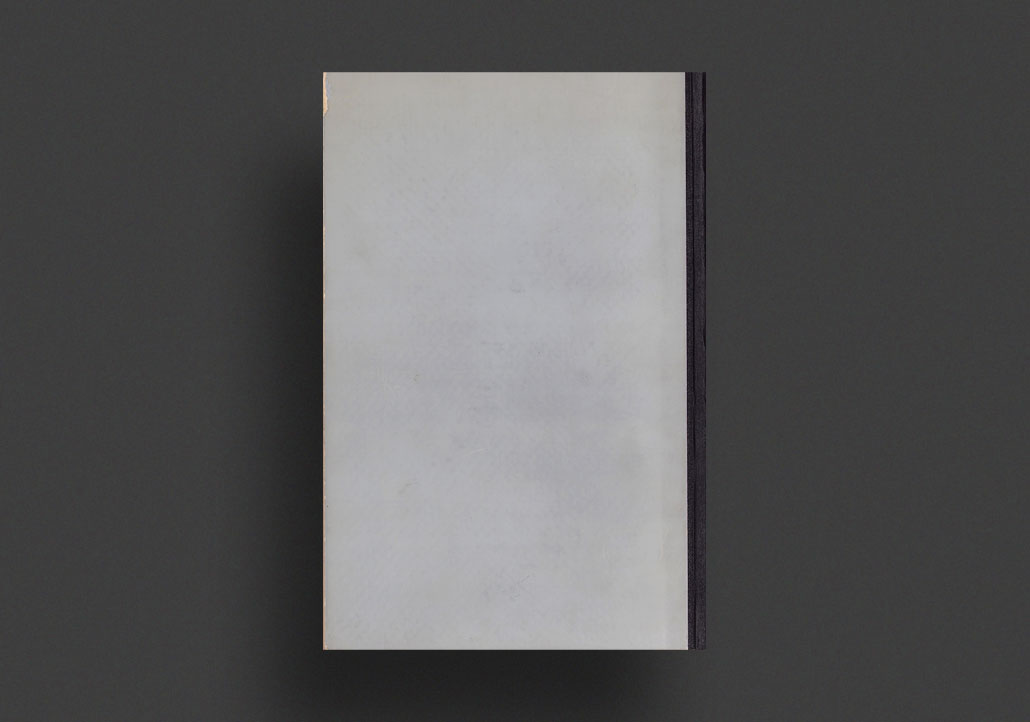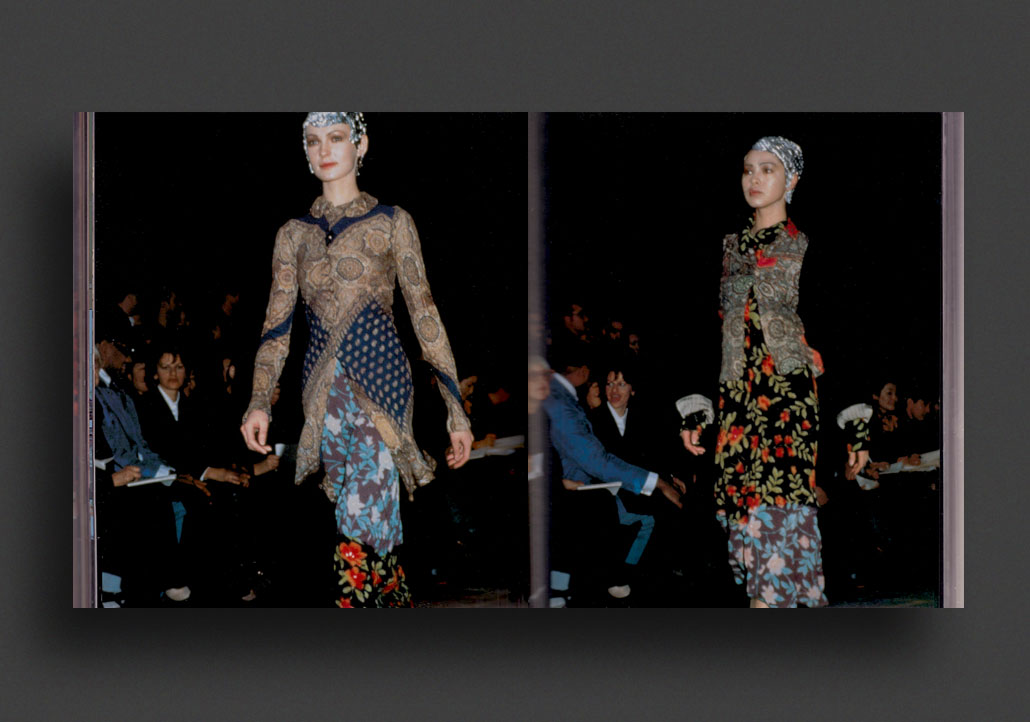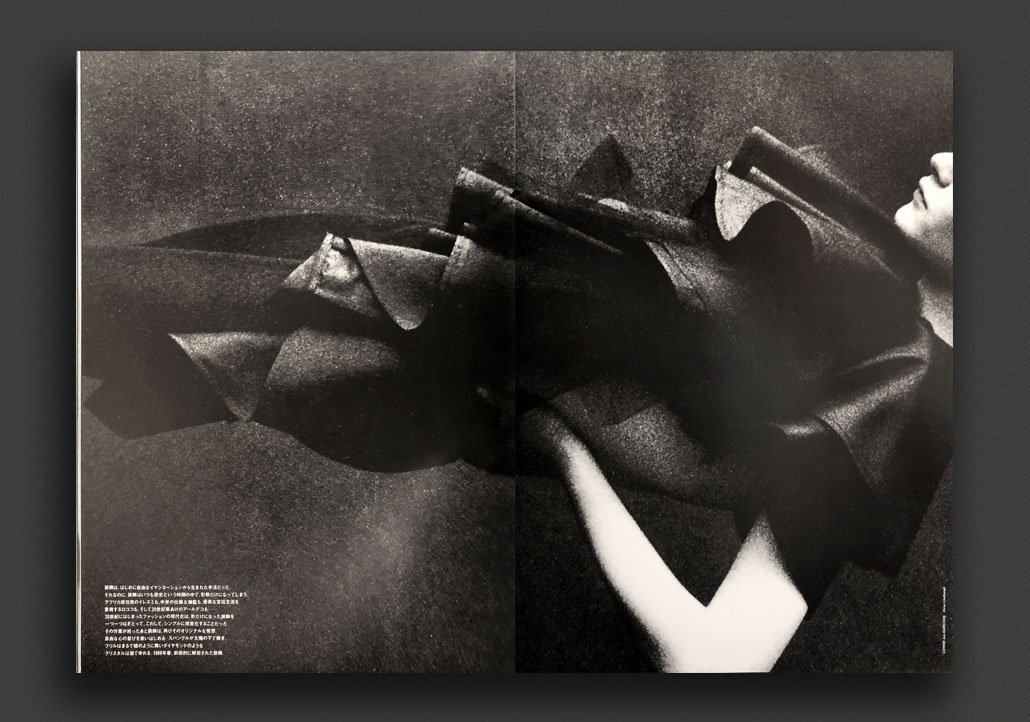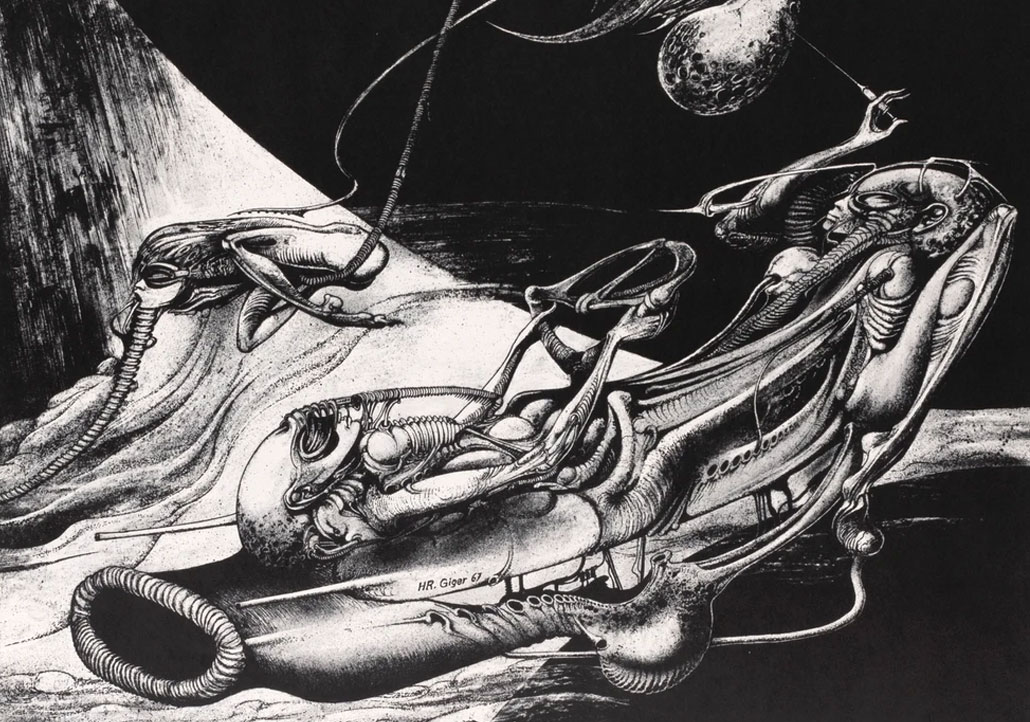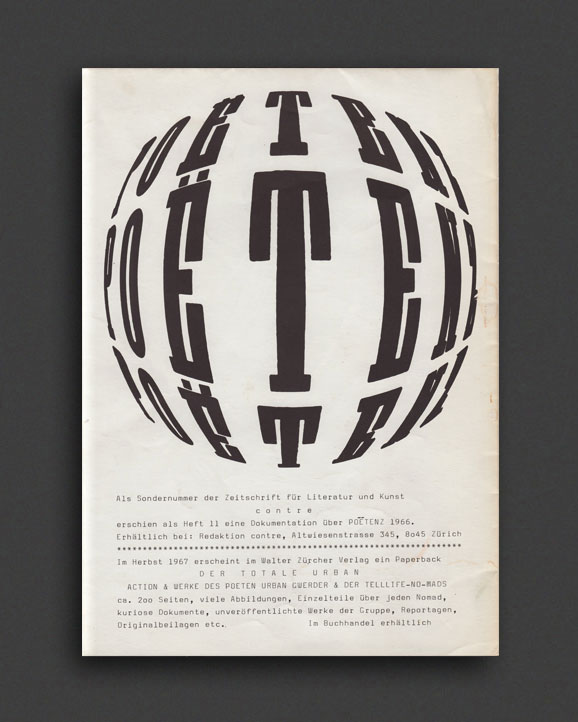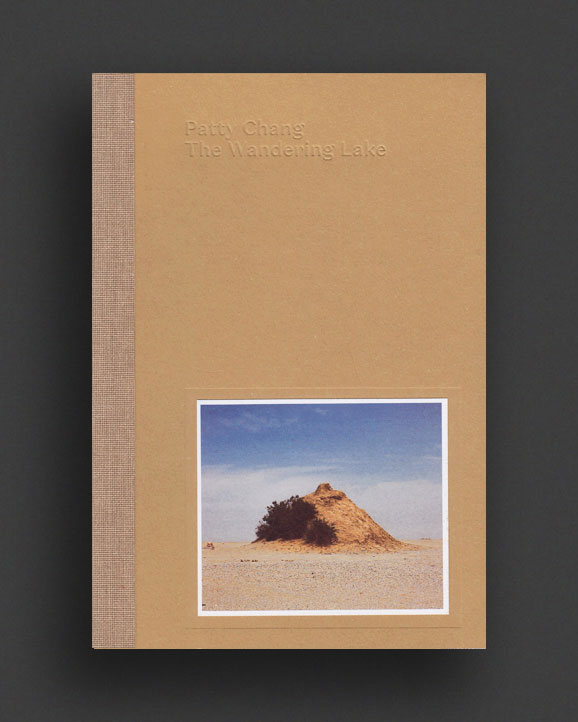(...less)
Rare first 1967 European hardcover edition of An Anthology of Concrete Poetry, published by the legendary edition hansjörg meyer. The book's editor, Emmett Williams, "as one of the original practitioners of concrete poetry, has been in a unique position to observe the development of the movement since its beginnings, and the selection in this volume therefore reflects a view of this evolution from within the movement rather than from a distance." An Anthology of Concrete Poetry was the first anthology on the international movement of Concrete poetry, published subsequently by the legendary Something Else Press in 1967 in America. The movement itself began in the early 1950s, in Germany–through Eugen Gomringer, who borrowed the term “concrete” from the art of his mentor, Max Bill–and in Brazil, through the Noigandres group, which included the de Campos brothers and Decio Pignatari. Over the course of the 1960s it exploded across Europe, America and Japan, as other protagonists of the movement emerged, such as Dieter Roth, Öyvind Fahlström, Ernst Jandl, bpNichol, Mary Ellen Solt, Jackson Mac Low, Ian Hamilton Finlay, Bob Cobbing, Dom Sylvester Houédard, Pierre Garnier, Henri Chopin, Brion Gysin and Kitasono Katue. By the late 1960s, poet Jonathan Williams could proclaim: “If there is such a thing as a worldwide movement in the art of poetry, Concrete is it.” The work of the 77 writers collected in this anthology varies greatly in its aims and forms, but all can be said to emphasize the visual dimension of language, manipulating individual letters and minimal semantic units to produce poems that are for contemplating as much as for reading. Emmett Williams, the book’s editor, added explanatory commentary for the poems and biographies of their authors, making this volume–long out of print–the definitive anthology of this movement, which has so influenced artists and writers of subsequent generations.
Writers and artists included: Friedrich Achleitner, Alain Arias-Misson, H. C. Artmann, Ronaldo Azeredo, Stephen Bann, Carlo Belloli, Max Bense, Edgard Braga, Claus Bremer, Augusto de Campos, Haroldo de Campos, Henri Chopin, Carl Friedrich Claus, Bob Cobbing, Paul de Vree, Reinhard Döhl, Torsten Ekbom, Öyvind Fahlström, Carl Fernbach-Flarsheim, Ian Hamilton Finlay, Larry Freifeld, John Furnival, Heinz Gappmayr, Ilse and Pierre Garnier, Matthias Goeritz, Eugen Gomringer, Ludwig Gosewitz, Bohumila Grögerova and Josef Hiršal, José Lino Grünewald, Brion Gysin, Al Hansen, Václav Havel, Helmut Heissenbüttel, Åke Hodell, Dom Sylvester Houédard, Ernst Jandl, Bengt Emil Johnson, Ronald Johnson, Hiro Kamimura, Kitasono Katue, Jiri Kolar, Ferdinand Kriwet, Arrigo Lora-Totino, Jackson Mac Low, Hansjörg Mayer, Cavan McCarthy, Franz Mon, Edwin Morgan, Maurizio Nannucci, bp Nichol, Hans-Jørgen Nielsen, Seiichi Niikuni, Ladislav Novák, Yuksel Pazarkaya, Décio Pignatari, Vlademir Dias Pino, Luiz Angelo Pinto, Carl Fredrik Reuterswärd, Diter Rot, Gerhard Rühm, Aram Saroyan, John J. Sharkey, Edward Lucie Smith, Mary Ellen Solt, Adriano Spatola, Daniel Spoerri, Vagn Steen, Andre Thomkins, Enrique Uribe Valdivielso, Franz Van Der Linde, Franco Verdi, Emmett Williams, Jonathan Williams, Pedro Xisto and Fujitomi Yasuo.
"Emmett Williams, as one of the original practitioners of concrete poetry, has been in a unique position to observe the development of the movement since its beginnings, and the selection in this volume therefore reflects a view of this evolution from within the movement rather than from a distance. However it is far too soon to regard any anthology of Concrete Poetry as being definitive since the movement is extremely active and major new works have yet to appear in this most interesting of current poetry movements." -- from interior flap. Printed in black-and-white.
Very Good copy with some light edge wear to thick covers, general light age/tanning.
File under:
Carl Fredrik Reuterswärd
Bohumila Grögerova and Josef Hiršal
José Lino Grünewald
Václav Havel
Helmut Heissenbüttel
Åke Hodell
Friedrich Achleitner
Alain Arias-Misson
H. C. Artmann
Ronaldo Azeredo
Stephen Bann
Carlo Belloli
Max Bense
Edgard Braga
Claus Bremer
Augusto de Campos
Haroldo de Campos
Henri Chopin
Carl Friedrich Claus
Bob Cobbing
Paul de Vree
Reinhard Döhl
Torsten Ekbom
Öyvind Fahlström
Carl Fernbach-Flarsheim
Ian Hamilton Finlay
Larry Freifeld
John Furnival
Heinz Gappmayr
Ilse and Pierre Garnier
Matthias Goeritz
Eugen Gomringer
Ludwig Gosewitz
Dom Sylvester Houédard
Ernst Jandl
Bengt Emil Johnson
Ronald Johnson
Hiro Kamimura
Kitasono Katue
Jiri Kolar
Ferdinand Kriwet
Arrigo Lora-Totino
Jackson Mac Low
Hansjörg Mayer
Cavan McCarthy
Franz Mon
Edwin Morgan
Maurizio Nannucci
bp Nichol
Hans-Jørgen Nielsen
Seiichi Niikuni
Ladislav Novák
Yuksel Pazarkaya
Décio Pignatari
Vlademir Dias Pino
Luiz Angelo Pinto
Diter Rot
Gerhard Rühm
Aram Saroyan
John J. Sharkey
Edward Lucie Smith
Mary Ellen Solt
Adriano Spatola
Daniel Spoerri
Vagn Steen
Enrique Uribe Valdivielso
Franz Van Der Linde
Franco Verdi
Emmett Williams
Jonathan Williams
Pedro Xisto
Fujitomi Yasuo
André Thomkins
André Thomkins
Friedrich Achleitner
Alain Arias-Misson
H. C. Artmann
Ronaldo Azeredo
Stephen Bann
Carlo Belloli
Max Bense
Edgard Braga
Claus Bremer
Augusto de Campos
Haroldo de Campos
Henri Chopin
Carl Friedrich Claus
Bob Cobbing
Paul de Vree
Reinhard Döhl
Torsten Ekbom
Öyvind Fahlström
Carl Fernbach-Flarsheim
Ian Hamilton Finlay
Larry Freifeld
John Furnival
Heinz Gappmayr
Ilse and Pierre Garnier
Matthias Goeritz
Eugen Gomringer
Ludwig Gosewitz
Bohumila Grögerova and Josef Hiršal
José Lino Grünewald
Brion Gysin
Al Hansen
Václav Havel
Helmut Heissenbüttel
Åke Hodell
Dom Sylvester Houédard
Ernst Jandl
Arrigo Lora-Totino
Jackson Mac Low
Hansjörg Mayer
Cavan McCarthy
Franz Mon
Edwin Morgan
Maurizio Nannucci
bp Nichol
Hans-Jørgen Nielsen
Seiichi Niikuni
Ladislav Novák
Yuksel Pazarkaya
Décio Pignatari
Vlademir Dias Pino
Luiz Angelo Pinto
Carl Fredrik Reuterswärd
Diter Rot
Gerhard Rühm
Aram Saroyan
John J. Sharkey
Edward Lucie Smith
Mary Ellen Solt
Adriano Spatola
Daniel Spoerri
Vagn Steen
Andre Thomkins
Enrique Uribe Valdivielso
Franz Van Der Linde
Franco Verdi
Emmett Williams
Jonathan Williams
Pedro Xisto
Fujitomi Yasuo
Bengt Emil Johnson
Ronald Johnson
Jiří Kolář
Hiro Kamimura
Kitasono Katue
Ferdinand Kriwet
edition hansjörg meyer / Düsseldorf
Concrete Poetry
Conceptual Art
Out-of-print / Rare
Collage / Mail Art / Xerox Art
Art
Minimal Art
Fiction / Poetry
Poetry
Fluxus




















































































































































